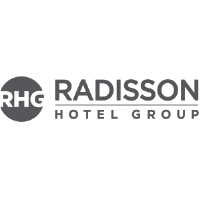4 Considerations for Managing Facilities Costs
as You Prepare to Return to Office

More companies are expected to return to office in Q3 than any other period since the pandemic started, according to CBRE, with around 50% of medium and large companies planning to return in some capacity over the next few months. As companies prepare to bring employees back and building occupancy reaches a new steady state, we recommend companies place a renewed attention on facilities management costs.
Below are four key considerations when managing your building and facilities costs as you return to the workplace.
Ensure Ongoing Costs Align with Your Long-term Workplace Strategy.
Reconsider the scope, service levels, and frequencies of key facilities services. Confirm all ongoing spend has been negotiated and brought under contract. Areas to consider include:
-
- Reevaluate desired janitorial service levels and cleaning schedules. Consider installing occupancy sensors to determine the appropriate frequency to clean specific areas (e.g. restrooms).
- Align your waste pickup frequency with expected demand (i.e., less foot traffic equals less trash).
- Right size the number of security guards working at a given time based on expected employee and guest foot traffic.
- Ensure building lighting is tied to motion sensors instead of automatic timers that are likely based on historical patterns.
Plan for “Pandemic-Related” Costs.
While the demand spikes for many pandemic-related items and services have subsided, many costs will remain through at least the end of 2021. Over two-thirds of companies plan to upgrade HVAC solutions in the near term, whether upgrading entire systems for enhanced circulation or simply replacing filters more often. The use of hand sanitizer and soaps is not going away, and data from ABM Industries shows that demand is still up 200-300% over pre-pandemic levels². PPE will still be required in many close-contact facilities such as manufacturing and distribution centers.
However, we are no longer in emergency times. Instead of rushing to make a quick buy, strategically source the spend by forecasting volumes, obtaining pricing from several viable providers, and negotiating competitive rates.
Strategically Address New Long-Term Costs
Many trends emerged during COVID that produced costs which are likely here to stay. These areas should be strategically addressed as soon as possible, as demand for these services continues to rise with return to office:
-
- Videoconferencing: With the increase of video calls in the past 18 months and many companies planning to return in a hybrid environment, videoconferencing-enabled conference rooms will be critical for in-office personnel to collaborate with remote individuals.
- Occupancy Tracking Tools: Occupancy and space planning are at the forefront of real estate decision making as companies return to office. Leaders are searching for the right technology to track workspace usage to inform their decisions. Many tools exist but choosing the right one at the right cost is critical.
- Touchless Features: COVID made us all more aware of the surfaces we touch and in turn sparked demand for touchless features in the workspace. Consider strategically sourcing touchless dispensers, doors, sinks, and hand dryers now to lock in rates before prices continue to rise.
Shift Cost Structures of Facilities Management (FM) Suppliers
Take advantage of opportunities to revise or negotiate service contracts and consider switching from a standard hourly rate-based fee structure to service level (SLA) based pricing. Outcome-based pricing provides more consistent, quality service at a predetermined rate, which reduces the risk of being overcharged due to inefficient or dishonest technicians. Secondly, outcome-based pricing often drives savings through changes in demand as well. For example, you can provide janitorial services suppliers with details on exactly how the building must look instead of a list of how often each area must be cleaned. If the supplier can maintain those cleanliness standards at a reduced frequency, then the established rates are less than those under a frequency-based pricing structure.
It is also a good time to consider moving in-house facilities labor to an outsourced third party. Outsourcing allows you to better match labor supply with demand fluctuations and allows your company to focus on core business functions.
Demand for many facilities services is on the rise again with companies returning to work, and labor rates are steadily increasing. The companies that will most effectively manage their facilities costs in the next 12 months are the ones who proactively address key spend areas now rather than waiting to see the market’s reaction.